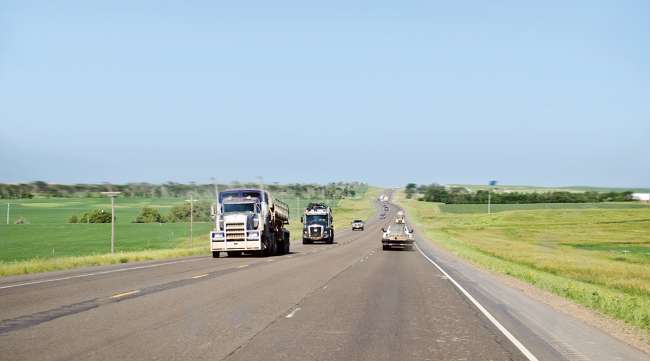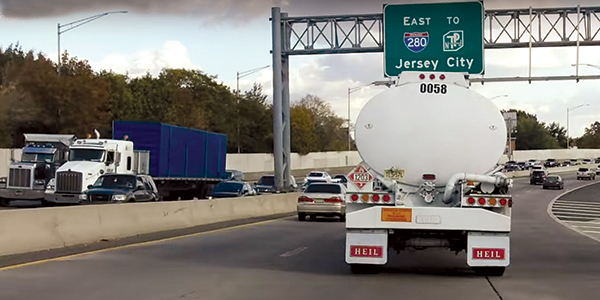Senior Reporter
Reason Foundation: North Dakota Tops Highway Performance List; New Jersey Ranks Last

[Stay on top of transportation news: Get TTNews in your inbox.]
North Dakota’s infrastructure, congestion levels and safety record propelled the state to the top spot in a recent report that chronicled the performance of highway systems nationwide. New Jersey, meanwhile, ranked last in the country.
The Reason Foundation’s 24th Annual Highway Report ranked Virginia, Missouri, Maine and Kentucky behind North Dakota as states with overall exemplary surface transportation conditions.
Pavement and bridge conditions, highway expenditures per mile, urbanized area congestion and fatality rates were among the 13 factors the report’s authors analyzed to determine a state’s ranking.
“The top-performing states tend to be a mix of high-population and low-population states,” according to the report. “Very rural states may have a slight advantage.”
Published last month, the report indicated that Virginia moved 25 spots to rank second primarily due to a decrease in the state’s number of structurally deficient bridges. “However, the state still has room for improvement,” the report said.
It added: “Virginia may need to dedicate more of its resources to reducing congestion.”

Traffic on the Essex Freeway, Rt. 280, in Newark, N.J. (roadwaywiz via YouTube)
States with the lowest performance records included Massachusetts, Hawaii, Rhode Island, Alaska and New Jersey.
“Unfortunately, due to system inefficiency including high costs, we remain skeptical that the increased revenue will improve the overall system,” the report’s authors indicated about the Garden State’s move during former Republican Gov. Chris Christie’s era to raise state fuel taxes to fund infrastructure repairs.
In specific categories, the report determined commuters in New Jersey, New York, California and Georgia spent more than 50 hours per year in traffic congestion. In Iowa, Pennsylvania, Rhode Island, South Dakota and West Virginia, 18% or more of the bridges in those states are classified as structurally deficient. That classification often means structures are safe but would benefit from maintenance. And South Carolina, Mississippi, Kentucky, Alaska, and Louisiana were found to have the highest overall fatality rates per 100 million vehicle-miles.
“States do not need to engage in a spending bonanza to improve their systems. But there is some evidence that a small increase in spending could yield a significantly better system,” the report concluded.
According to the report, data from the Federal Highway Administration, the National Bridge Inventory and states’ highway fatality rates were used, as well as data from INRIX Research and the American Community Survey.
The report’s authors were Baruch Feigenbaum, assistant director of transportation policy at the Reason Foundation; Spence Purnell, policy analyst at the Reason Foundation; and Gregory Fields, an independent transportation research consultant.
“In looking at the nation’s highway system as a whole, there was a decadeslong trend of incremental improvement in most key categories, but the overall condition of the highway system has worsened in recent years,” Feigenbaum said in a statement Aug. 22. “This year, we see some improvement on structurally deficient bridges, but pavement conditions on rural and urban highways are declining, the rise in traffic fatalities is worrying, and we aren’t making needed progress on traffic congestion in our major cities.”




